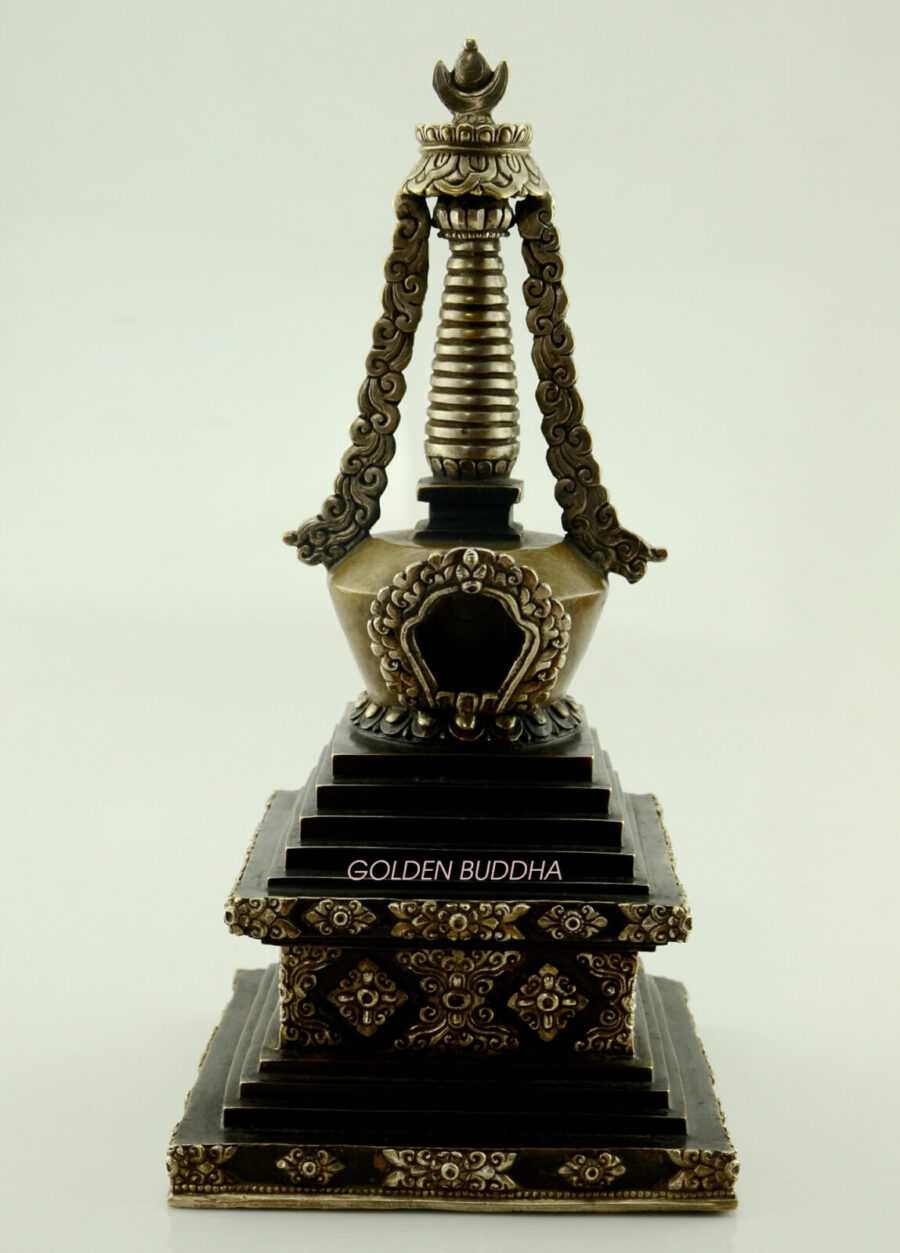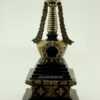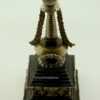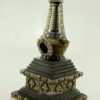The Buddhist stupa is one of the most easily recognized monuments found throughout Asia (also known as chorten or chaitya). This is because it carries great significance to devotees and also to the governments of Buddhist countries. However, there is great symbolism that is inherent in a stupa. Indeed, some stupas are believed to hold relics such as hair or a tooth of the Buddha.
A stupa is known by different names depending on the geographical region. In Tibet, the stupa is known as a chorten and it is called a pagoda in East Asia. Additionally, a chaitya can be a prayer hall or a Buddhist temple containing a stupa. Evidence of stupas dates back to the 4th century BCE and they predate the existence of Buddha statues by several centuries. This stupa uses a shaft to represent the torso of the Buddha. The crown represents his head, and the square at the base of the shaft represents his crossed legs. It may be possible to place symbols or valuable items inside the base located at the top of the 4 steps.
Our stupa was hand crafted by Nepali artisans based in Patan, Nepal. By using the lost wax method, it is possible to capture intricate details in the framework of the stupa. Please enjoy the intricate designs, symbols and hand carvings that come with this unique item.







